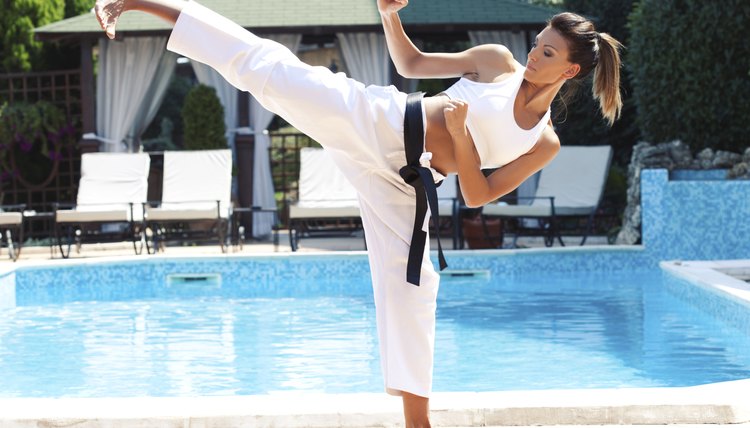Rare Fighting Styles

With the blending and altering of old fighting styles into new techniques, the list of fighting styles is incredibly long. But most modern fighting techniques have their origins in more traditional fighting arts practiced for hundreds of years. While all fighting styles make use of the hands in combat, each focuses on different aspects of strength and execution.
Tang Soo Do
Martial arts historians do not agree on the origin of Tang Soo Do, but Japan, China and Okinawa are three countries where the art might have originated. Modern Tang Soo Do represents a blend of updated fighting styles from China and Korea. The art concentrates on creating a centered person with the ability to fight if needed.
Escrima
Escrima is a Filipino martial art most commonly associated with stick fighting and first encountered by the Spaniards when they colonized the islands in 1521. Once Spain gained control of the islands, they banned Escrima, so Filipinos practiced in secret and later introduced the art disguised as a dance. Although Filipinos brought Escrima to the United States after World War I, the art went mostly unnoticed until Bruce Lee introduced Escrima, also known as Filipino Stick Fighting, in his movies “Enter the Dragon” and “Game of Death.”
Capoeira
Capoeira is an African fighting art that originated among African slaves during the Dutch invasion of Brazil. The slaves escaped into the forest during the invasion and formed tribes. When Brazilians ousted the Dutch from the country, they immediately went in search of the lost slaves. The African tribes developed the art of Capoeira as a method of self-defense against an opponent with weaponry. The Brazilian government banned Capoeira in 1890 but lifted the ban in 1928. Today, people practice Capoeira as a dance, sport, art or game.
Ba Gua Zhang
The Chinese art of Ba Gua Zhang began in the 1800s when creator Dong Hai Chuan began a personal journey of enlightenment. Chuan’s art is a combination of open-hand fighting and the ability to perform fighting techniques while in constant motion, a first in Chinese martial arts. Although instructors teach Ba Gua Zhang with slight variations from the original art, all variations share the circle walk, a pattern of movement where the student holds static poses with the upper body while walking in a circle.
Pak Mei
Chinese oral tradition claims that five Shoalin elders created Pak Mei during the Qing Dynasty. Pak Mei focuses on stance, breathing and focus in order to create extreme force rather than relying on muscle strength alone.
Writer Bio
Kaye Morris has over four years of technical writing experience as a curriculum design specialist and is a published fiction author. She has over 20 years of real estate development experience and received her Bachelor of Science in accounting from McNeese State University along with minors in programming and English.
